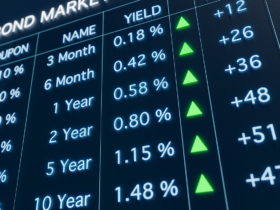As we have reported before, Fannie Mae and Freddie Mac are expected to raise their conforming loan limits to about $650,000 from $548,250 However, we did not discuss the reality that the conforming loan limit in high cost areas could hit nearly $1 million. The Wall Street Journal Editorial Board is not happy about this…(WSJ)
- Not for the rich. I think it’s important to remember that purpose of the government backstop was “intended to assist low- and middle-income buyers. Now it subsidizes affluent Americans who don’t need the help…”
- It’s not needed. Currently, the median price of an existing U.S. home is only $363,700. Homes over the loan limit are not forbidden from getting a mortgage. In fact, it is just the opposite. “Well-to-do Americans in high-cost areas can still get a non-federally guaranteed “jumbo” mortgage at ultra-low rates, though they may have to make a bigger down payment.”
- The solution. Instead of the feds backing more expensive loans, local governments should “encourage more housing development, not for the feds to prop up demand for high-end homes.”
The editorial goes on to argue that we are headed down the path of the 2000s that led to the subprime mortgage crisis. While I agree the housing has been extremely hot, there are plenty of signs that things are cooling down on their own. It should also be noted that credit standards have remain elevated, if not, increased since the start of the mania which is quite different from what happened in 2000.
The real issue I believe is at the heart of of this editorial is concern about the control the government has on the housing market. The Feds funds rate sitting at zero has helped to push home prices higher and government backed MBS’ are the most in demand. This continues to put the government in the drivers seat. What they really want is for the market to be freed from government’s grip and I do too. However, I’m not sure refusing to increase loan limits accomplishes this goal. I think it only disrupts the current market to the determinant of current consumers.






Got a Questions?
Find us on Socials or Contact us and we’ll get back to you as soon as possible.